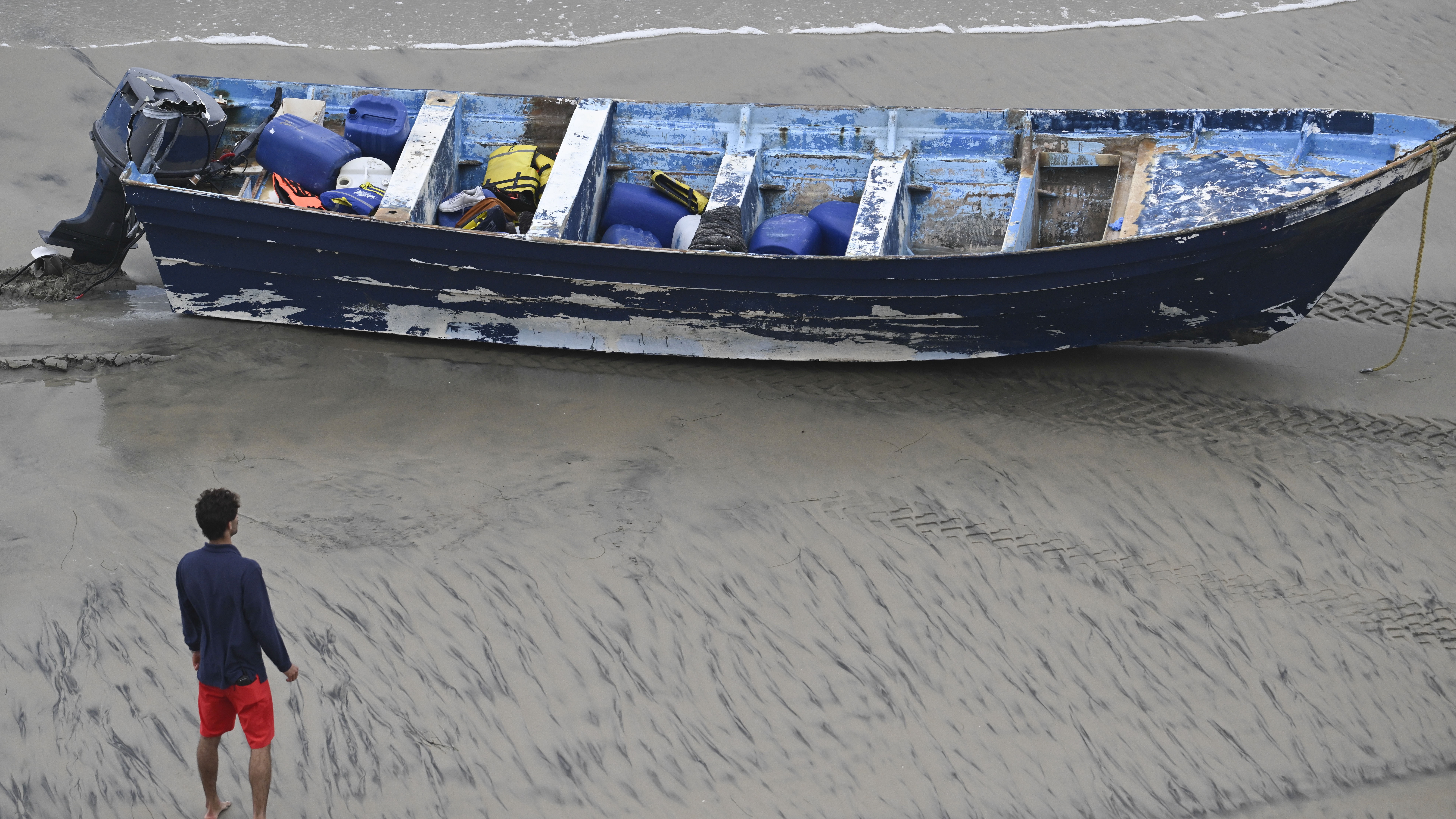Auto Part's Wild Ride: Crossing Borders 4 Times!
The Global Journey of a Car Part: Border Crossings and the Auto Industry
Introduction: The Unexpected Journey of a Simple Auto Part
Ever wondered about the life of a single auto part before it finds its way into your car? It's not as straightforward as you might think. In fact, some components embark on a surprisingly complex journey, crossing borders multiple times! This article delves into the fascinating world of automotive supply chains and the intricate dance they perform between nations, using a seemingly simple part – the striker plate – as our guide. We’ll explore how global trade agreements, tariffs, and the quest for efficiency have created a network where a single piece can traverse international lines several times before becoming a part of your vehicle.
The Curious Case of the Striker Plate: A Frequent Flyer
Take the humble striker plate, for example. This seemingly insignificant piece of metal, crucial for ensuring your car door latches securely, might surprise you with its international travel itinerary. As Brendan Lane, general manager of Lanex Manufacturing in Windsor, Ontario, points out, these plates often cross the US-Canada border four times before they're finally installed in a car. Imagine that! This isn’t some unique, isolated case; it’s a symptom of a much larger, deeply integrated North American automotive supply chain.
Lanex Manufacturing: A Family Business Bridging Borders
Lanex Manufacturing, situated just across the river from Detroit, has been a key player in this cross-border exchange for generations. Brendan Lane himself has been making these trips since he was 16, highlighting the long-standing nature of these relationships. Their striker plates are sold to suppliers of major American automakers like Ford, General Motors, and Stellantis, underscoring the interconnectedness of the industry. It's a testament to how deeply interwoven the American and Canadian automotive sectors have become.
The Anatomy of a Cross-Border Trip: From Raw Materials to Finished Product
Step 1: Sourcing Raw Materials
The journey often begins with raw materials. Steel, the lifeblood of the striker plate, may be sourced from various locations. Perhaps it's mined in the United States, processed in Canada, or even imported from overseas. The initial sourcing sets the stage for the international dance to come.
Step 2: Initial Processing in Canada
Lanex Manufacturing takes the raw steel and begins the initial fabrication process in Windsor, Ontario. This could involve cutting, stamping, and shaping the steel into the basic form of the striker plate. This initial stage leverages Canadian expertise and potentially lower production costs.
Step 3: Crossing into the US for Further Processing
The partially finished striker plates then cross the border into the United States for further refinement. This could involve heat treating, coating, or other specialized processes that add durability and functionality. Why the US? Perhaps a specific facility possesses unique equipment or expertise unavailable in Canada.
Step 4: Back to Canada for Final Touches
After the US processing, the striker plates return to Lanex Manufacturing in Canada for final finishing. This might include quality control, assembly, or packaging before being shipped to automotive suppliers. It’s a back-and-forth that exemplifies the intricate supply chain.
Step 5: A Final Trip to the US: Integration into Vehicles
Finally, the completed striker plates make their last journey across the border, heading to assembly plants in the US, where they're integrated into new vehicles. It's a long and winding road for a small piece of metal!
Why So Many Border Crossings? The Pursuit of Efficiency
Why does this happen? The answer lies in the relentless pursuit of efficiency and cost optimization. Each leg of the journey is often driven by factors like lower labor costs, specialized expertise, proximity to resources, and favorable trade agreements. Companies strategically locate different stages of production in different countries to maximize their bottom line. It’s a global puzzle, with each piece strategically placed.
The Impact of Trade Agreements: NAFTA/USMCA and Beyond
The North American Free Trade Agreement (NAFTA), and now the USMCA (United States-Mexico-Canada Agreement), has played a significant role in shaping these integrated supply chains. These agreements have reduced tariffs and other trade barriers, making it easier and more cost-effective for goods to cross borders. But, what happens when these agreements are threatened or altered?
Tariffs and Protectionism: A Threat to the Status Quo?
The Trump administration's focus on bringing manufacturing back to the United States through tariffs threw a wrench into the carefully calibrated machinery of the automotive supply chain. Stiff tariffs on imported steel or aluminum, for example, could significantly increase the cost of producing striker plates, potentially disrupting the entire process.
Unraveling the Supply Chain: A Complex and Costly Undertaking
Untangling these deeply interwoven supply chains is a daunting task. It would require significant investment in new facilities, equipment, and training. Moreover, it could lead to higher production costs, which would ultimately be passed on to consumers. Is complete reshoring even feasible, or desirable?
The Automotive Industry's Response: Adapting to a Changing Landscape
The automotive industry is constantly adapting to changing economic and political conditions. Companies are exploring various strategies to mitigate the risks associated with tariffs and trade barriers, including diversifying their supply chains, investing in automation, and working with governments to negotiate more favorable trade agreements. It's a constant balancing act between efficiency, cost, and political stability.
The Future of Automotive Manufacturing: A Look Ahead
The future of automotive manufacturing is uncertain. The push for electric vehicles, the rise of automation, and evolving trade policies are all factors that will shape the industry in the years to come. One thing is certain: the automotive supply chain will continue to be a complex and dynamic network, constantly adapting to new challenges and opportunities.
The Environmental Impact of Cross-Border Manufacturing
It’s important to consider the environmental footprint of these complex, cross-border supply chains. The transportation of materials and components across international borders contributes to carbon emissions. Are there more sustainable alternatives? Companies are increasingly exploring ways to reduce their environmental impact, such as using more locally sourced materials, optimizing logistics, and investing in renewable energy.
The Human Cost: Labor and Working Conditions
The pursuit of lower production costs can sometimes come at the expense of labor standards and working conditions. It's crucial to ensure that workers throughout the supply chain are treated fairly and ethically. Consumers are becoming more aware of these issues and are demanding greater transparency and accountability from companies.
The Consumer's Perspective: Paying the Price for Globalization
Ultimately, the consumer bears the brunt of these complex supply chains and trade policies. Higher tariffs and increased production costs translate into higher prices for cars. Is it worth it? Consumers must weigh the benefits of globalization, such as lower prices and greater product variety, against the potential drawbacks, such as job losses and environmental damage.
Conclusion: The Global Auto Part: A Microcosm of Complex Trade
The journey of a simple auto part, like the striker plate, vividly illustrates the complexity of modern global trade. It highlights the intricate relationships between countries, the relentless pursuit of efficiency, and the potential impacts of tariffs and trade barriers. Understanding these dynamics is crucial for navigating the evolving landscape of the automotive industry and the global economy. The next time you close your car door, remember the little striker plate and its incredible international journey!
Frequently Asked Questions
Here are some frequently asked questions about automotive supply chains and cross-border manufacturing:
-
Why are automotive supply chains so complex?
Automotive manufacturing requires thousands of individual parts, each with specific material and processing requirements. Companies optimize costs by sourcing these parts from various locations, leveraging specialized expertise and lower labor costs.
-
How do tariffs affect automotive manufacturing?
Tariffs increase the cost of imported materials and components, potentially raising production costs and consumer prices. They can also disrupt established supply chains and force companies to find alternative sourcing options.
-
What is "reshoring" and why is it being discussed?
Reshoring refers to bringing manufacturing back to a company's home country. It's being discussed as a way to create jobs, reduce reliance on foreign suppliers, and potentially improve quality control. However, it can also be more expensive than outsourcing.
-
What is the USMCA and how does it impact the automotive industry?
The USMCA (United States-Mexico-Canada Agreement) is a trade agreement that replaced NAFTA. It includes new rules of origin for automobiles, requiring a higher percentage of parts to be made in North America to qualify for tariff-free treatment.
-
How is the automotive industry adapting to the changing global landscape?
Automakers are diversifying their supply chains, investing in automation, exploring alternative materials, and working with governments to negotiate more favorable trade agreements. They are also focusing on sustainability and ethical sourcing practices.


